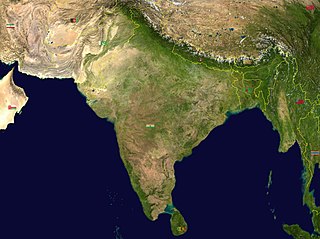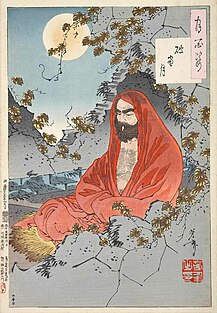 W
WAshtadiggajas is the collective title given to the eight Telugu scholars and poets in the court of Emperor Krishnadevaraya who ruled the Vijayanagara Empire from 1509 until his death in 1529. During his reign, Telugu literature and culture reached its zenith. In his court, eight poets were regarded as the eight pillars of his literary assembly. The age of Ashtadiggajas is called Prabandha Age. All of the Ashtadiggajas had composed at least one Prabandha Kavyamu and it was Ashtadiggajas who gave Prabandha its present form. Most of the Ashtadiggajas are from southern part of present-day Andhra Pradesh state (Rayalaseema) and Ashtadiggajas, Allasani Peddana, Dhurjati, Nandi Thimmana, Madayyagari Mallana and Ayyalaraju Ramabhadrudu are from the Rayalaseema. Tenali Ramakrishna hailed from the Guntur district of Andhra Pradesh. Ramarajabhushanudu was another Ashtadiggaja.
 W
WBuddhism is an ancient Indian religion, which arose in and around the ancient Kingdom of Magadha, and is based on the teachings of the Gautama Buddha who was deemed a "Buddha", although Buddhist doctrine holds that there were other Buddhas before him. Buddhism spread outside of Magadha starting in the Buddha's lifetime.
 W
WIn Southern India, a devadasi was a female artist who was dedicated to worship and serve a deity or a temple for the rest of her life. The dedication took place in a Pottukattu ceremony that was somewhat similar to a marriage ceremony. In addition to taking care of the temple and performing rituals, these women also learned and practiced classical Indian artistic traditions such as Bharatanatyam, Mohiniyattam, Kuchipudi, and Odissi. Their social status was high as dance and music were an essential part of temple worship.
 W
WThe Dnyaneshwari, also referred to as Jnanesvari, Jnaneshwari or Bhavartha Deepika is a commentary on the Bhagavad Gita written by the Marathi saint and poet Sant Dnyaneshwar in 1290 CE. Dnyaneshwar lived a short life of 21 years, and this commentary is notable to have been composed in his teens. The text is the oldest surviving literary work in the Marathi language, one that inspired major Bhakti movement saint-poets such as Eknath and Tukaram of the Varkari (Vithoba) tradition. The Dnyaneshwari interprets the Bhagavad Gita in the Advaita Vedanta tradition of Hinduism. The philosophical depth of the text has been praised for its aesthetic as well as scholarly value.
 W
WHindustan pronounced as, along with its shortened form Hind (هند), is the Persian name for North India, broadly the Indian subcontinent, which later became used by its inhabitants in Hindi–Urdu (Hindustani). Other toponyms of the subcontinent include Jambudvipa, Bharata, and India. After the Partition of India, it continues to be used as a historic name for the Republic of India.
 W
WHistory of clothing in the Indian subcontinent can be traced to the Indus Valley Civilization or earlier. Indians have mainly worn clothing made up of locally grown cotton. India was one of the first places where cotton was cultivated and used even as early as 2500 BCE during the Harappan era. The remnants of the ancient Indian clothing can be found in the figurines discovered from the sites near the Indus Valley Civilisation, the rock-cut sculptures, the cave paintings, and human art forms found in temples and monuments. These scriptures view the figures of human wearing clothes which can be wrapped around the body. Taking the instances of the sari to that of turban and the dhoti, the traditional Indian wears were mostly tied around the body in various ways.
 W
WThe Indo-Aryan migrations were the migrations into the Indian subcontinent of Indo-Aryan peoples, an ethnolinguistic group that spoke Indo-Aryan languages, the predominant languages of today's North India, Pakistan, Nepal, Bangladesh, Sri Lanka and the Maldives. Indo-Aryan population movements into the region and Anatolia from Central Asia are considered to have started after 2000 BCE, as a slow diffusion during the Late Harappan period, which led to a language shift in the northern Indian subcontinent. The Iranian languages were brought into the Iranian plateau by the Iranians, who were closely related to the Indo-Aryans.
 W
WKaimur Range is the eastern portion of the Vindhya Range, about 483 kilometres (300 mi) long, extending from around Katangi in Jabalpur district of Madhya Pradesh to around Sasaram in Rohtas district of Bihar. It passes through the Rewa and Mirzapur divisions. The range never rises more than a few hundred metres above the surrounding plains and has a maximum width of around 80 km.
 W
WMauryan art is the art produced during the period of the Mauryan Empire, which was the first empire to rule over most of the Indian subcontinent, between 322 and 185 BCE. It represented an important transition in Indian art from use of wood to stone. It was a royal art patronized by Mauryan kings especially Ashoka. Pillars, Stupas, caves are the most prominent survivals.
 W
WMauryan polish describes one of the frequent characteristics of architecture and sculptures of the Maurya Empire in India, which gives a very smooth and shiny surface to the stone material, generally of sandstone or granite. Mauryan polish is found especially in the Ashoka Pillars as well as in some constructions like the Barabar Caves. The technique did not end with the empire, but continued to be "used on occasion up to the first or second century A.D.", although the presence of the polish sometimes complicates dating, as with the Didarganj Yakshi. According to the archaeologist John Marshall: the "extraordinary precision and accuracy which characterizes all Mauryan works, and which has never, we venture to say, been surpassed even by the finest workmanship on Athenian buildings".
 W
WThe Republic of India has two principal short names in both official and popular usage, each of which is historically significant, "India" and "Bharata". The first article of the Constitution of India states that "India, that is Bharat, shall be a union of states," implicitly codifying "India" and "Bharata" as equally official short names for the Republic of India. A third name, "Hindustān", is sometimes an alternative name for the region comprising most of the modern Indian states of the subcontinent when Indians speak among themselves. The usage of "Bhārat", "Hindustān", or "India" depends on the context and language of conversation.
 W
WThe Nāṭya Śāstra is a Sanskrit treatise on the performing arts. The text is attributed to sage Bharata Muni, and its first complete compilation is dated to between 200 BCE and 200 CE, but estimates vary between 500 BCE and 500 CE.
 W
WThe black clay pottery of Nizamabad in Azamgarh district of Uttar Pradesh, India is unique type of clay pottery known for its dark shiny body with engraved silver patterns. It was registered for Geographical Indication tag in December 2015.
 W
WNritya, also referred to as Nrit, Nritta, Natana or Natya, refers to "dance, act on the stage, act, gesticulate, play" in the Indian traditions. It is sometimes sub-divided into two forms: nritta or pure dance, wherein expression-less movements of a dancer play out the rhythms and phrases of the music; and nritya or expressive dance, wherein the dancer includes facial expression and body language to portray mood and ideas with the rhythmic movements to communicate with the audience.
 W
WThe Persian language in the Indian subcontinent, before the British colonisation, was the region's lingua franca and a widely used official language in North India. The language was brought into South Asia by various Turkic and Afghan dynasties from the 11th century onwards, notable of which were the Ghaznavids, Delhi Sultanate and the Mughal Dynasty. Persian held official status in the court and the administration within these empires. It largely replaced Sanskrit as the language of politics, literature, education, and social status in the subcontinent.
 W
WRana is a historical title denoting an absolute Hindu monarch in the Indian subcontinent. Today, it is used as a hereditary name in the Indian subcontinent. "Rana" was formerly used as a title of martial sovereignty by Rajput kings in India. Rani is the title for the wife of a rana or a female monarch. It also applies to the wife of a raja. Compound titles include rana sahib, ranaji, rana bahadur, and maharana.
 W
WTamil Buddhism is Buddhism amongst the Tamils which was historically found in the Tamilakam and Sri Lanka.
 W
WVadya, also called Vadyaka or Atodya, is one of the three components of sangita, and refers to "instrumental music" in the Indian traditions. The other two components of sangita are gita and nrtya. In the general sense, Vadya means an instrument and the characteristic music they produce, sound or play out.